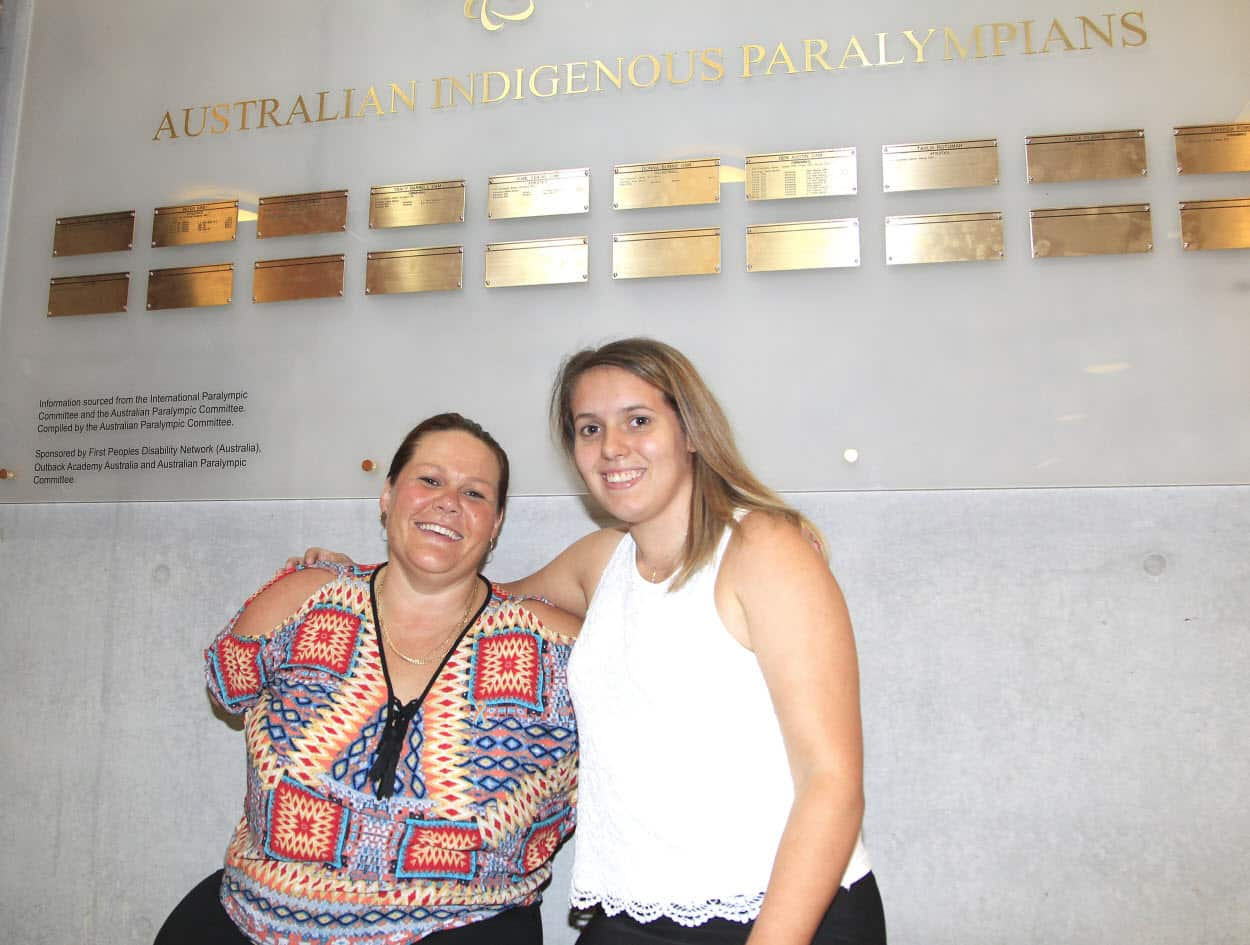In the past, Indigenous Paralympians were never celebrated for their cultural heritage as well as their incredible sporting achievements.
In 1960, Uncle Kevin Coombs OAM was the first Indigenous person to represent Australia at either the Paralympics or the Olympics. Mr Coombs has an outstanding record competing in five Paralympic Games but his Indigenous roots were rarely mentioned in relation to his international wheelchair basketball feats.
In 1992, Tracy Barrell OAM won a gold medal for swimming in the 1992 Paralympics and although she was honored for her win as an Australian, she was never celebrated as an Indigenous Paralympian.
That is, until now. On Wednesday, the, the and the Red Dust Heelers unveiled 11 plaques at the one for each of Australia’s Indigenous athletes who have gone on to represent their country and culture at past Paralympic Games.
The plaques will now be permanently displayed at NCIE in Redfern alongside plaques which had previously been awarded to Indigenous Olympians. FPDN spokesperson and Paralympic Gold medalist, Ms Barrell was among the Indigenous Paralympians to receive a plaque.
FPDN spokesperson and Paralympic Gold medalist, Ms Barrell was among the Indigenous Paralympians to receive a plaque.

Australia's Indigenous Paralympians finally acknowledged Source: Supplied
She said it was an honor to “participate in this project and to have the opportunity to highlight the achievements of First Peoples with disability”.
“I am super proud,” said the triple congenital amputee Paralympic swimmer, Ms Barrell.
“I have always been on the wave of breaking down barriers. This is another acknowledgment of the hurdles I’ve had to overcome.”
Currently, Ms Barrell said, Indigenous athletes with a disability “just don’t feel like they are going to be supported or accepted. They are too scared to move forward [in their sport and participate in the Paralympics] and feel supported".
“I have always been on the wave of breaking down barriers. This is another acknowledgment of the hurdles I’ve had to overcome.”
“Recognising Indigenous people in the Paralympics is necessary for more people feel accepted in playing sport and join the Paralympic movement.”
She reasoned that “it’s probably a cultural thing”.
“I know when I was going through it, [being an athlete in the Paralympics], I didn’t disclose that I was Indigenous because it wasn’t accepted.
“No one understood the culture and [the games] were mainstream white, from the dealings and the protocols. No one did a ‘Recognition of Country’ or highlighted cultural background at all.”
Not recognising the Indigenous status of participants, she said, is equal to denying the athletes the ability to truly represent their country.
“It’s taking it to the next level: Not only are we Australian but we are First Nations.” The overdue cultural recognition was made to also coincide with the, held around the world on Thursday.
The overdue cultural recognition was made to also coincide with the, held around the world on Thursday.

Paralympians Tracy Barrell and Amanda Fowler at the National Centre of Indigenous Excellence Source: Supplied
“This is the first step: the first recognition of Indigenous athletes who are paralympians,” she said.
“We got our own special plaques unveiled and that was the first step forward in starting to come out, move forward and be proud.
“If you want to play sport and you are good at it, you [usually] want to represent Australia. And if you are Aboriginal, you no longer have to pay a price. So be proud of your disability and your culture.”
Chairperson of First Peoples Disability Network, Aunty Gayle Rankine, said it was a great honour to recognise people with disability who have represented Australia at the Paralympic Games.
“I hope this serves to encourage other Indigenous people with disability to get involved with accessible and inclusive sport at all levels," said Ms Rankine.
APC CEO, Lynne Anderson, agreed adding that she hopes the recognition “inspires more emerging Indigenous athletes with a disability to pursue sport and enjoy the physical and social benefits that Paralympic sport can provide”.


